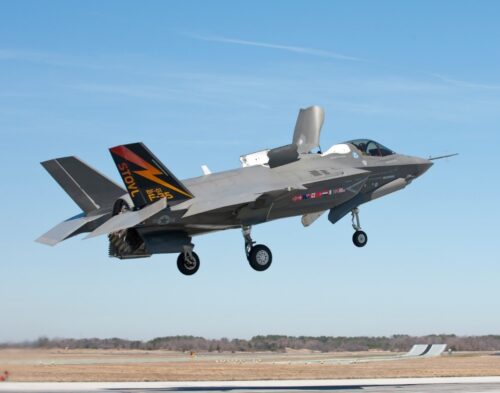V/STOL Aircraft Design Considerations, Case Studies, and Lessons Learned (Online Short Course – Started 28 October 2025) 28 October 2025 - 20 November 2025 Online
- From 28 October – 20 November 2025 (4 Weeks, 8 Classes, 16 Total Hours)
- Every Tuesday and Thursday at 1–3 p.m. Eastern Time (all sessions will be recorded and available for replay; course notes will be available for download)
- A comprehensive overview of V/STOL and its unique engineering challenges, taught by unparalleled experts in the field.
- All students will receive an AIAA Certificate of Completion at the end of the course.
OVERVIEW
This course will introduce the student to the design aspects of vertical and short takeoff and landing aircraft, with an emphasis on the basic configurations available to the designer and what design criteria drove a particular configuration. Emphasis will be placed on the operational need for V/STOL, their long-sought benefits, its industrial legacy, past challenges, and state-of-the-art. The course will briefly look at how the future may be shaped by these specialized aircraft.
The technical obstacles associated with developing aircraft that have vertical and short take-off and landing capabilities will be presented, along with case studies that will reveal both successful and unsuccessful V/STOL aircraft programs and their important lessons.
This course is offered by the AIAA V/STOL Systems Technical Committee. The expert speakers from US industries, the government, and academia, all have firsthand experience in the development of V/STOL aircraft.
LEARNING OBJECTIVES
At the conclusion of this short course, students would have become familiar with:
- The major design constraints in designing a V/STOL aircraft
- The various propulsion configurations available in the past and applications for future V/STOL designs
- Past and current types of V/STOL aircraft and their experimental and operational applications
- Fundamentals of V/STOL jet effects and other systems aspects of V/STOL flight
- The various approaches to V/STOL aircraft testing and lessons learned.
- The pros and cons of different V/STOL aircraft based on Case Studies, and what characteristics made them viable or not.
AUDIENCE: This course is aimed at technicians, engineers, pilots, and managers, both newcomers to the field and specialists in search of a broader perspective, who would benefit from an overview of V/STOL aircraft, their performance, and its technology. The content is aimed to engage a wide audience of mixed aerospace and non-aerospace industry background and will be presented in a simplified and practical manner to allow the practicing professional to understand the various aspect of V/STOL design that has driven the recent innovations seen in aircraft such as the Bell-Boeing V-22 and the Lockheed Martin F-35B.
COURSE FEES (Sign-In To Register) It’s not too late to register! Catch up by watching recorded lectures.
– AIAA Member Price: $895 USD
– Non-Member Price: $1095 USD
– AIAA Student Member Price: $495 USD
CLASSROOM HOURS / CEUs: 16 classroom hours / 1.6 CEU/PDH
CANCELATION POLICY: A refund less a $50.00 cancellation fee will be assessed for all cancellations made in writing prior to 5 days before the start of the event. After that time, no refunds will be provided.
CONTACT: Please contact Lisa Le or Customer Service if you have any questions about the course or group discounts (for 5+ individuals).
- Propulsion Systems:
- Fans
- Rotors
- Ejectors
- Lift Fans
- Lift Engines
- Inlets
- Nozzles / Exhaust Systems
- Electric propulsion
- Powered Lift Aerodynamics:
- Hover and Suckdown
- Ground effects and Fountain Jets
- Conversion and the Jet Flap effect
- Short Takeoff vs. VTO
- Environmental Effects:
- Outwash and ground vortices
- Near-field and far-field Hot Gas Ingestion
- Ground erosion and spalling
- Shipboard operations and challenges
- Acoustics and Noise
- Flight testing, ground testing:
- Instrumentation, equipment
- Stands, tethers, hover pits
- Wind tunnel, Thrust measuring rigs
- Integrated Flight/Propulsion Controls:
- Stability & Control / Control Power
- Propulsion Controls
- Flying Qualities / Handling Qualities
- Use of Simulation
- Pilot Vehicle Interface – How to design for the Human, Reduce Costs and Transform Safety:
- Control Inceptors
- Pilot-vehicle interface
- Automation and the minimization of human error
- Rotorcraft and Tiltrotors:
- Early tilt rotors
- Tilt-rotor research and progress
- Tilt rotor ground and flight testing
- Tilt rotor aerodynamics and flight mechanics
- Operational challenges of tilt rotors
- The future of tilt rotors
- Case Studies:
- Hunting H.126, YC-14, YC-15, C-17, and Ball-Bartoe JW-1 Jetwing
- Electra Goldfinch and EL9
- Soviet V/STOL Aircraft – Yakovlev Yak-36, Yak-38 and Yak-141
- German V/STOL Aircraft – Dornier Do-31, VFW VAK191, EWR VJ101
- Hawker Siddeley P.1127, Kestrel and Harrier
- Lockheed Martin X-35B and F-35B
- Bell X-22A
COURSE DELIVERY AND MATERIALS
- The course lectures will be delivered via Zoom. Access to the Zoom classroom will be provided to registrants near to the course start date.
- All sessions will be available on-demand within 1-2 days of the lecture. Once available, you can stream the replay video anytime, 24/7.
- All slides will be available for download after each lecture. No part of these materials may be reproduced, distributed, or transmitted, unless for course participants. All rights reserved.
- Between lectures during the course, the instructor(s) will be available via email for technical questions and comments.
AIAA Training Links
-
For information, group discounts,
and private course pricing, contact:
Lisa Le, Education Specialist ([email protected])

